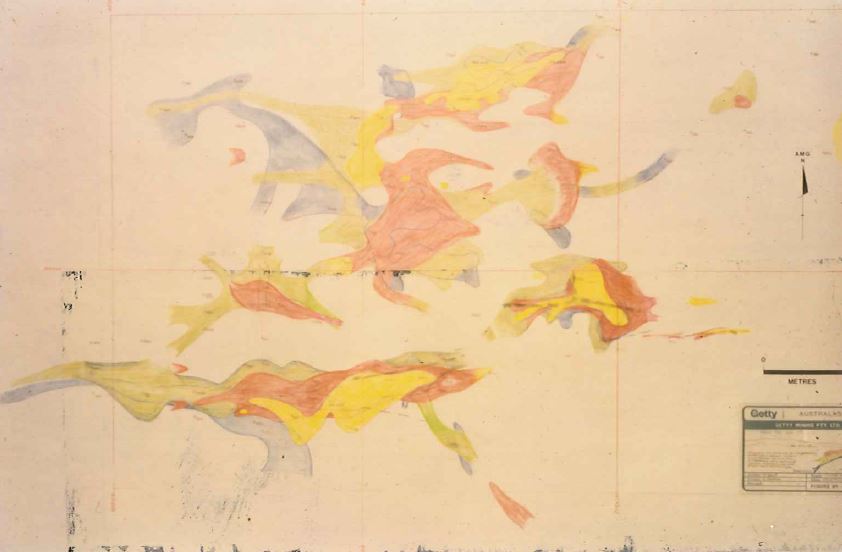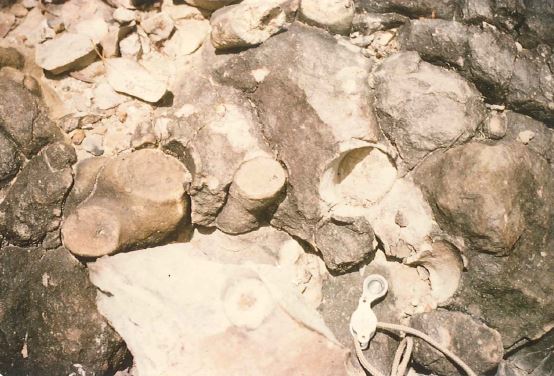SMEDG
- PREVIOUS MEETING
DATE: Thursday 9th March 1978 - 4.30 pm
VENUE: Room A/B, 2nd Floor, Science Centre, 35 Clarence St., Sydney
SPEAKERS: Kim Stanton-Cook - Getty Mining Pty. Ltd.
TOPIC: "The Discovery, Exploration and Geological Description of the
Maureen U3O8-CaF2-Mo Deposit near Georgetown, North Queensland"
The Maureen deposit was discovered in 1971 by Peter O'Rourke of Central
Coast Exploration using conventional airborne radiometric techniques.
Follow-up work on the prospect comprised detailed prospecting, ground radiometrics,
trenching, geological mapping, radon surveys, soil and stream sediment
geochemistry and drilling.
The mineralisation, in several discrete occurrences, is contained mainly in the Fiery Creek Formation, a volcaniclastic,
fluviatile sequence at the base of the Permo-Carboniferous Galloway Volcanics. The Fiery Creek Formation
rests unconformably on the Proterozoic Einasleigh Metamorphics (quartz-mica schist, gneiss, pegmatite), has a
thickness of up to 100 metres and is overlain by a thick (500m+) sequence of felsic to intermediate
volcanics (dominated by flow-banded rhyolites). The Fiery Creek Formation outcrops over a NNE-SSW strike length of about 5 km and
dips to the west at between 15 and 30 degrees. Mineralisation is closely related to several east-west, sub-vertical
basement faults, the most important of which pre-date the host sediments.
The deposit has been characterised as a low temperature, metasomatic replacement type.
Mineralisation is envisaged as having migrated along the basement faults
in solution as late stage products from a postulated apophyse of the Elizabeth Creek
Granite. Ascending past the unconformity, the solutions encountered receptive areas for
precipitation. These include open pore spaces in the conglomeratic and coarse sandstone facies,
vugs, fractures, bedding plane partings and calcic sediments or particles which provide a superimposed
chemical control. O'Rourke has noted the 'manto-style' of the deposits.
Apart from an overall east-west elongation, the deposits are irregular in plan and section, lying
generally above the basement faults and spreading laterally into the surrounding sediments. Clear
preference is shown for the coarser-grained units with fine-grained tuff and chocolate shale beds
being generally unmineralised.
Indicated and Inferred Resources are about 2.4 million tonnes at an average grade of 0.15% U3O8,
15% CaF2 and 0.08% Mo (About 3500 tonnes contained U3O8).
Kim Stanton-Cook graduated from Macquarie University in 1971 and has worked in uranium, base metal and nickel exploration
with McIntyre Mines, AGIP-Nucleare and Getty Oil Development Company for the past seven years. He was
Project Geologist and On-Site Manager for Getty Mining at Maureen for three years (1975 - 1977).

Maureen Mantos, overlayed, using 0.1% U3O8 cut-off. Image 900 metres x 600 metres

The "Tuball Sandstone" - fine grained, tuffaceous sandstone with tubes/balls created as an indurated zone extending out from an oxidation reaction to pyritic strands threaded through sandstone during lithification/dewatering with balls formed around oxidised pyrite grains.
Maureen Update - Mega Uranium
KS-C Update
Previous Meeting
Past Meetings List*
The Feedjit SMEDG Visitor Map
Which one of the red squares is you?